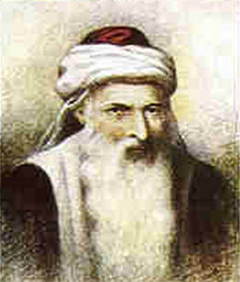
Joseph Ben Ephraim Caro (also spelt ‘Karo’) was apparently born in Toledo, Castille, Spain, in 1488 and died in 1575. After the Jews’ expulsion from Spain in 1492, Caro’s family left for Turkey where he lived for about 40 years. At first he lived in Istanbul, but subsequently, not later than 1522, he lived in Adrianople, Nikopol, and Salonika.
In 1522 at the age of 34 he began writing his great work, the Beit Yosef, and in 1536 he left Turkey for Safed (today Tzfat, Israel). Caro was regarded as the leader of the Jewish scholars of Safed and apparently served as the head of its communal council. His name almost invariably appears first on all documents issued by its Beth Din as well as other local rulings and scholastic decisions.
Safed became the centre of kabbalist study, teaching and piety, and like all leading rabbinic scholars of his time, Caro was also a kabbalist. He wrote a mystical diary which was published in the form of a kabbalistic-homiletical commentary on the Pentateuch (Five Books of Moses).
Caro married at least three times. In his works he cites traditions in the names of his three fathers-in-law: Chaim Albalag, Isaac Saba, and Zechariah Zaksel Ashkenazi, referring to each of them as mori (‘my teacher’).
Caro’s Writings
The Beit Yosef
For encyclopaedic knowledge and complete mastery of the subject, for thoroughness of research, and for keen critical insight, this work is unmatched in the whole of rabbinic literature. To this day it is an indispensable guide for anyone desirous of following the development of any individual law of the Talmud from its source in the 16th century.
The Shulchan Aruch
Joseph Caro has been immortalized by his most famous work, the Shulchan Aruch (‘Prepared Table’), which has become the authoritative code of Jewish law for Orthodox Jewry throughout the world.
The fact that the Shulchan Aruch was a digest of the Beit Yosef made it impossible to level against Caro the vehement criticism which had been levelled against Maimonides and his code: that it laid down the law without giving sources or divergent opinions.
The Kesef Mishneh
The second most important of Caro’s rabbinic works (if the Beit Yosef and the Shulchan Aruch are regarded as one work) is his Kesef Mishneh (Venice, 1574–75), a commentary on part of Maimonides’ Mishneh Torah. It was written as a complement to the Maggid Mishneh of Vidal of Tolosa
Responsa
Caro’s responsa (written responses to queries posed to him) are not nearly as important as his other works. It is noteworthy that although his son Judah, following one of the last requests of his father, assembled and arranged them for publication, only the first volume, Even ha-Ezer, was published in Salonika in 1598, after Caro’s death. His responsa on the other three sections of the Shulhan Arukh, entitled Avkat Rokhel (cf. Song 3:6), were not published until 1791, also in Salonika.
Links
- Orthodox Union: Rabbi Joseph Karo
- Jewish Virtual Library: Joseph ben Ephraim Caro
- Eliezer Segal: The Shulchan Arukh
- My Jewish Learning: Joseph Caro
- Chabad: Rabbi Yosef Caro – The Master
The video above is a brief introduction to The Shulchan Aruch, an extremely important and influential compendium of Jewish law (halachah),
written by Rabbi Joseph Caro (the video is 4 minutes 56 seconds long)
The video above is a longer (55 minute) presentation about Rabbi Joseph Caro and his work, The Shulchan Aruch,
by Dr Henry Abramson, an academic specialising in Jewish history.


